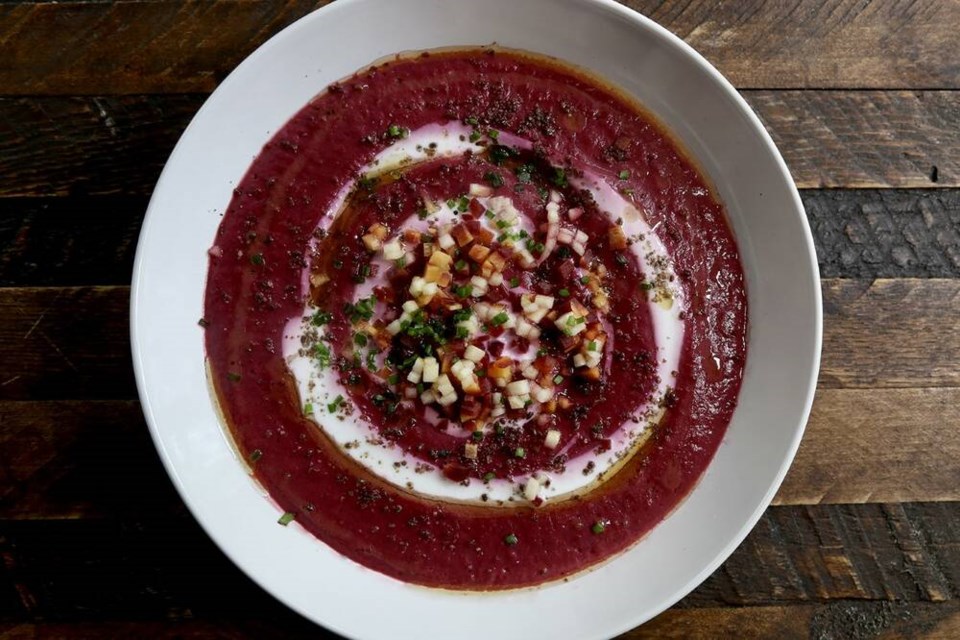In his revelatory book Eat to Beat Disease, Dr. William W. MD dives deep into the study of food as medicine.
Notably, he cites published peer-reviewed research explaining the benefits of adding dark blue-purple hued fruits and vegetables to one’s diet.
The data is compelling and persuasive, and I for one am adding purple seed potatoes and purple sweet potatoes to the small but brilliant rainbow of food we grow at home to help us stay healthy longer, by staving off chronic disease.
Purple potatoes, purple yams, elderberries, blueberries and blackberries contain bioactive (helps the body) anthocyanin and carotenoids. The ancient Inca of Peru, where purple potatoes originated, revered the tuber for its extraordinary nutrition.
Anthocyanins are deep blue, purple and red pigments found in plants. They are distinctive phytochemicals (plant chemicals) among the many flavonoids that help plants thrive by attracting pollinators and fighting predators and environmental stressors.
Anthocyanins can be found in black rice, black beans, red cabbage, red onions, purple cauliflower, purple eggplant skin, cherries, pomegranates, red grapes, black plums, black elderberries, and many other foods.
I am grateful to Dr. Li and others like him who are committed to formalizing and proving the declaration “let food be thy medicine, and let medicine be thy food”, attributed to Hippocrates, the ancient Greek and so-called father of medicine.
To my way of thinking, modern and food-as medicines are of equal importance.
If we do our best to stay healthy by eating whole and unprocessed foods, get plenty of rest and stress-busting exercise, and engage positively with our professional and social communities, we can go a long way in preventing or delaying the onset of chronic disease. Quite possibly we can reverse symptoms, even disease.
We can start small, in the garden or at the market, exercising our brains and bodies and choosing a rainbow of fresh produce and protein grown without unnatural intervention.
We can cook, can or preserve with family or friends. We can commune at the table — laugh and nourish our brains and our bodies — and be grateful for the privilege and ability to do so.
Just this week, inspired by Dr. Li’s book, I prepared some purple-powered medicine soup. It felt odd, making dessert-coloured soup, but it was delicious and packed with goodness. My meat-loving husband enjoyed the soup immensely. Now that’s a test.
I par-steamed peeled chunks of purple potato and purple sweet potato with one red antioxidant packed beet, until half cooked. After draining (save purple water) and steam drying the veg, I tossed them in olive oil and sea salt before sheetpan-roasting in a 200 °C oven until caramelized and tender.
Meanwhile, I sauteed diced red onion, minced purple garlic and some Peruvian-inspired spices like coriander, fennel, basil, cinnamon, cilantro, cumin, and sea salt in olive oil, until soft and fragrant.
All ingredients plus one large sweet red Klippers Organics apple (cubed, skin on) and some ground chia seeds and hemp hearts went into a large pot, to which I added the reserved water and rich vegetable broth (to cover) and let simmer for 20 minutes.
After a quick whizz in the Vitamix, the soup was served with a drizzle of antioxidant rich olive oil, some good-for-your-gut-biome goat yogurt, some diced purple carrot and apple, minced chives, a flourish of ground chia, and plenty of fresh-ground black pepper to help make all the natural goodness bio-available (helps our bodies absorb nutrients).
Look for purple-fleshed seed potatoes at local garden centres and online seed stockists, or order from small organic growers like Metchosin Farms on Vancouver Island.
Laura Marie Neubert is a West Vancouver-based urban permaculture designer. Follow her on Instagram @upfrontandbeautiful, learn more about permaculture by visiting her Upfront & Beautiful website or email your questions to her here.
For a taste of permaculture, click on the YouTube link below:




